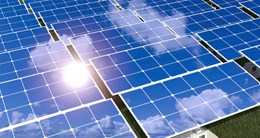Tuesday, 16/12/2025 | 18:07 GMT+7

As 2024 draws to a close, Europe’s energy winter preparedness is a priority. Since Russia’s invasion of Ukraine in February 2022, the EU and its member countries have taken many bold measures to decrease reliance on fossil fuels, accelerate the shift to clean energy and build a more resilient and diversified energy system, with a view to strengthening energy independence and ensuring stable, affordable energy supplies for citizens and businesses.
 NIU and Trane embark on energy-saving program for a more sustainable future
NIU and Trane embark on energy-saving program for a more sustainable future
 Jordan Boosts Industrial Efficiency With 66 New Agreements In Energy Efficiency Program
Jordan Boosts Industrial Efficiency With 66 New Agreements In Energy Efficiency Program
 Brickability grows revenue on back of energy efficiency and fire safety drives
Brickability grows revenue on back of energy efficiency and fire safety drives
 ENEC and ADNOC to advance nuclear technology for energy efficiency
ENEC and ADNOC to advance nuclear technology for energy efficiency
 Europe’s first fuel: unlocking energy efficiency for a competitive and sustainable future
Europe’s first fuel: unlocking energy efficiency for a competitive and sustainable future


























 Enhancing capacity to develop and implement energy efficiency policies at local level
Enhancing capacity to develop and implement energy efficiency policies at local level
 Bosch Vietnam Plant Benefits from Investment in Energy Efficiency
Bosch Vietnam Plant Benefits from Investment in Energy Efficiency
 Webinar 2: “Financial Support for Energy Efficiency Enterprises – Opportunities and Challenges”
Webinar 2: “Financial Support for Energy Efficiency Enterprises – Opportunities and Challenges”
 Vietnamese enterprises achieve green growth and cut costs through energy efficiency
Vietnamese enterprises achieve green growth and cut costs through energy efficiency
 Capacity Building for Program Implementing Entity
Capacity Building for Program Implementing Entity
 Promoting Energy Efficiency for Technical Staff of Brick and Ceramic Sector
Promoting Energy Efficiency for Technical Staff of Brick and Ceramic Sector